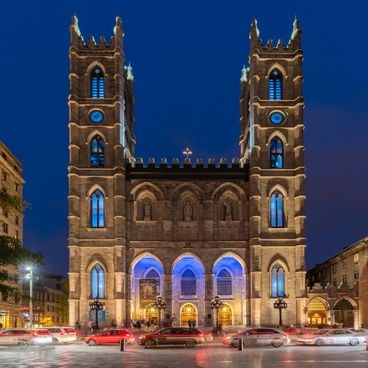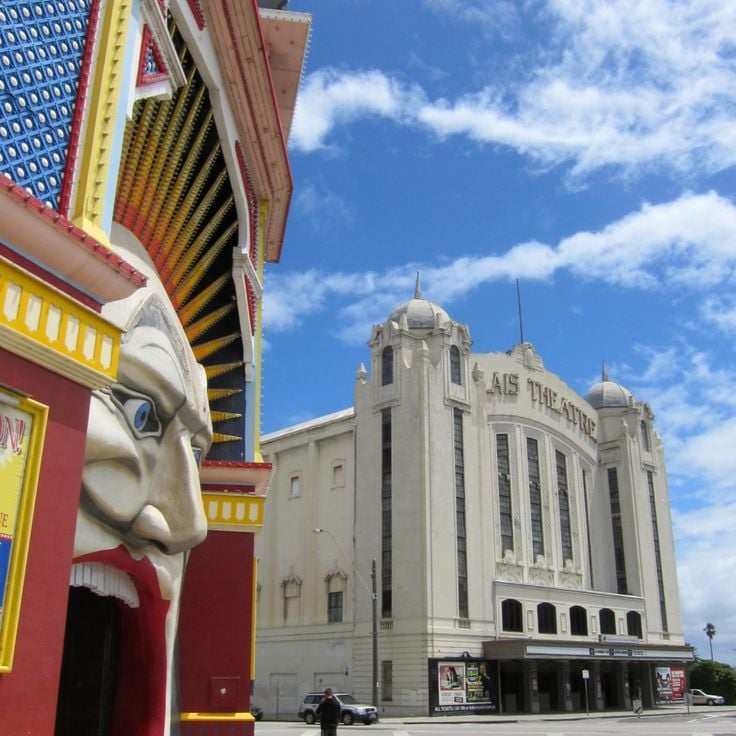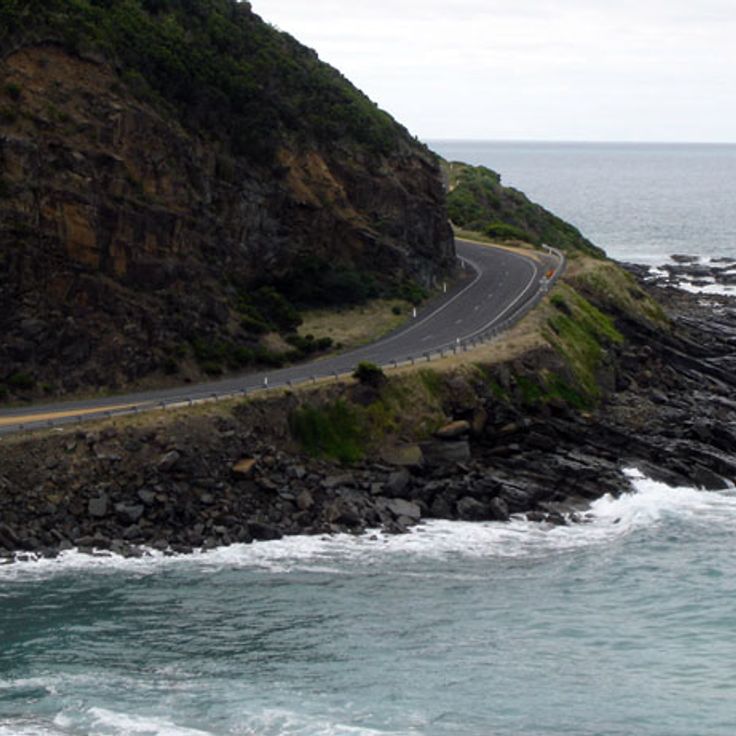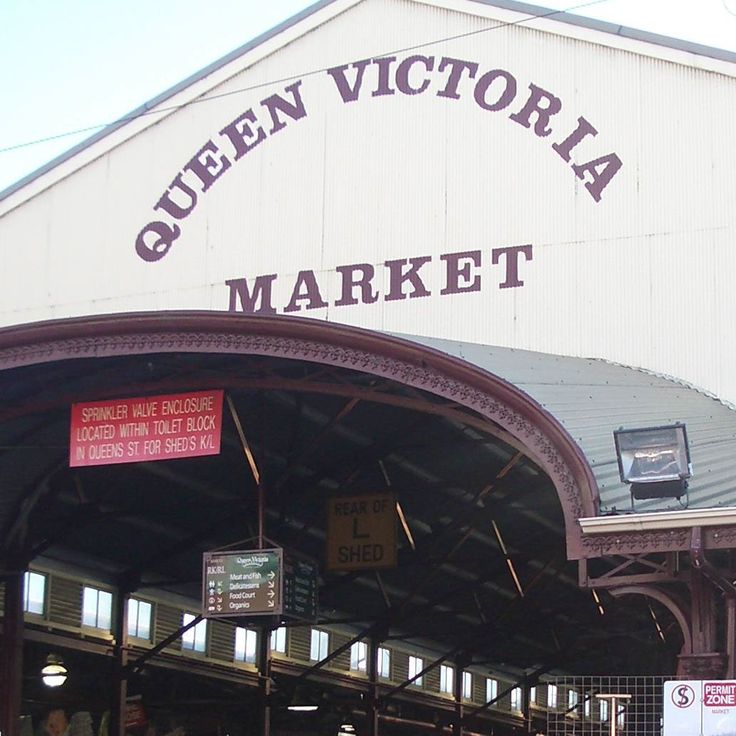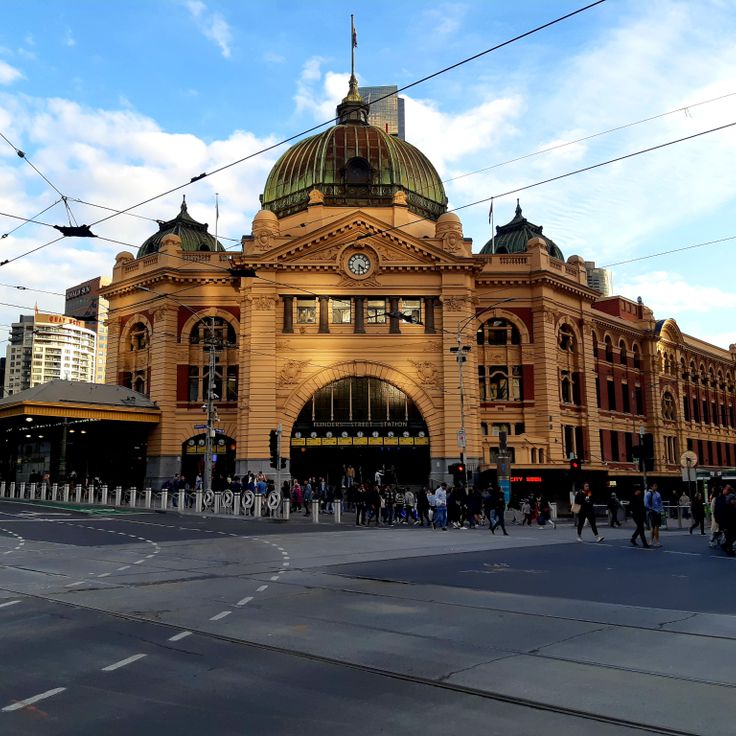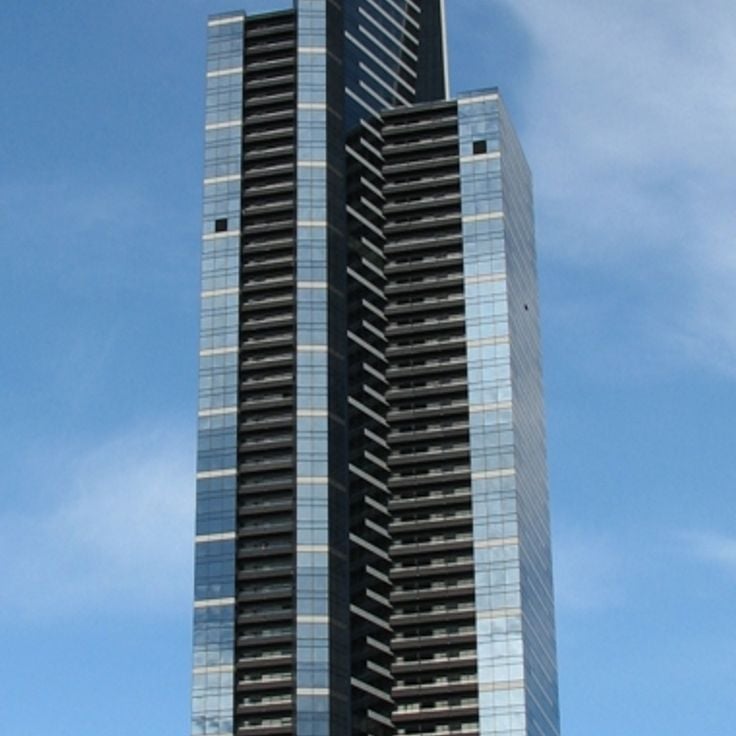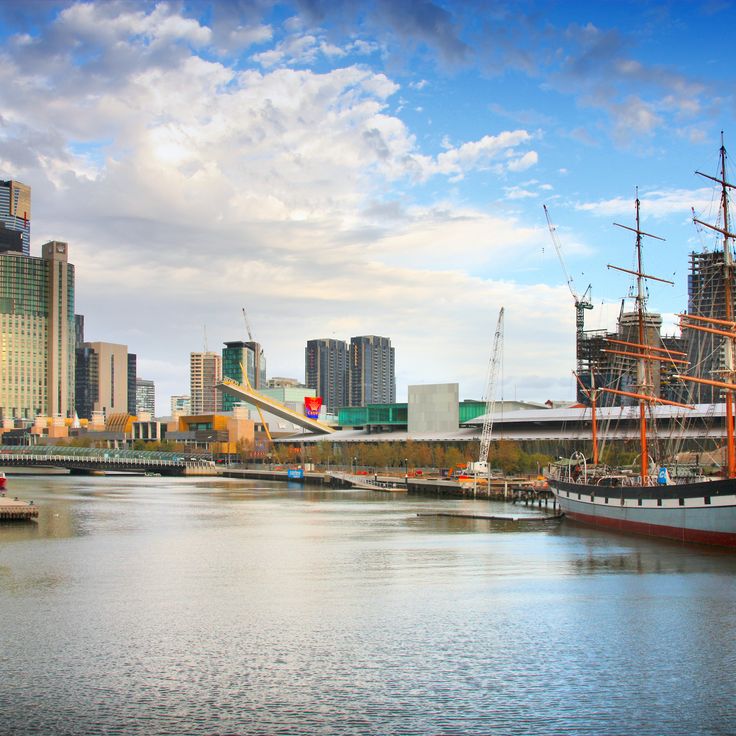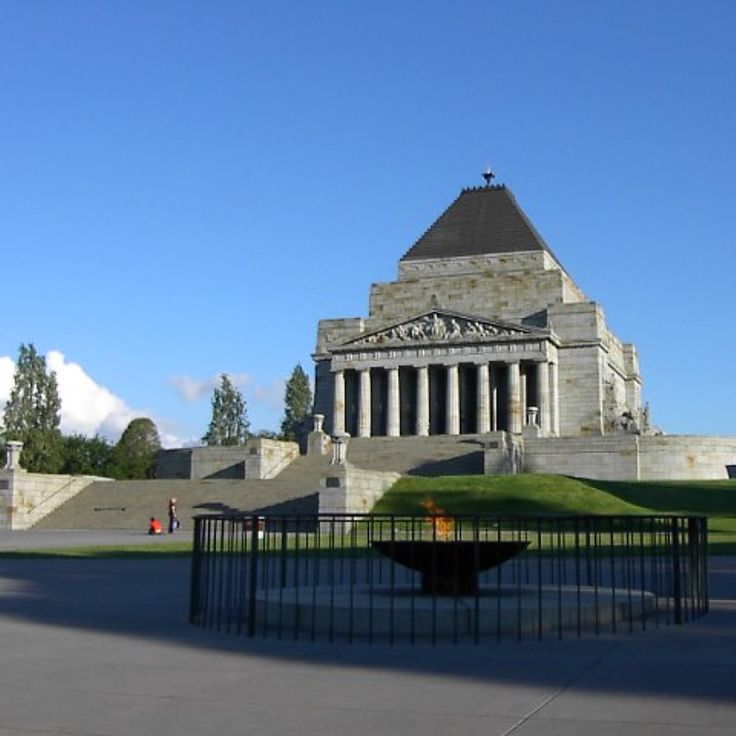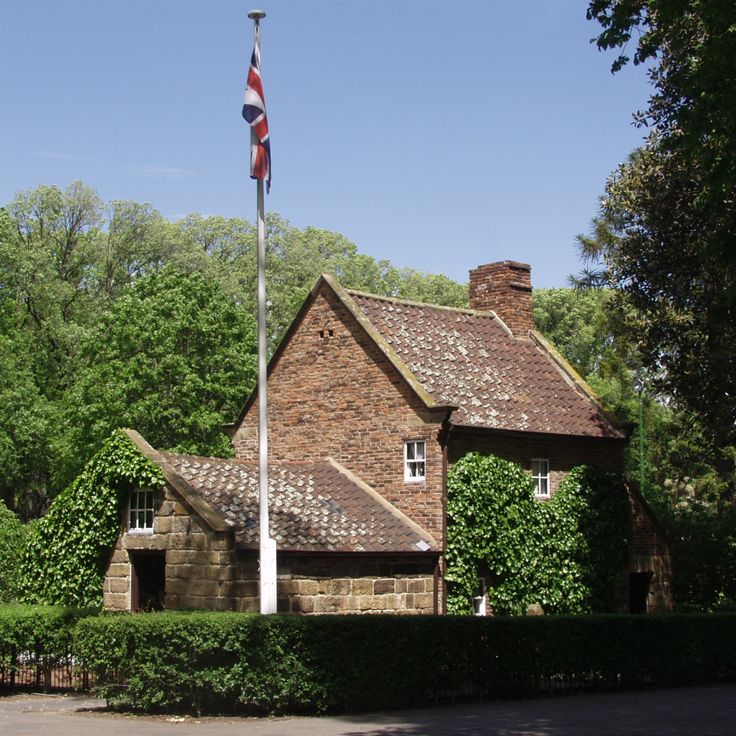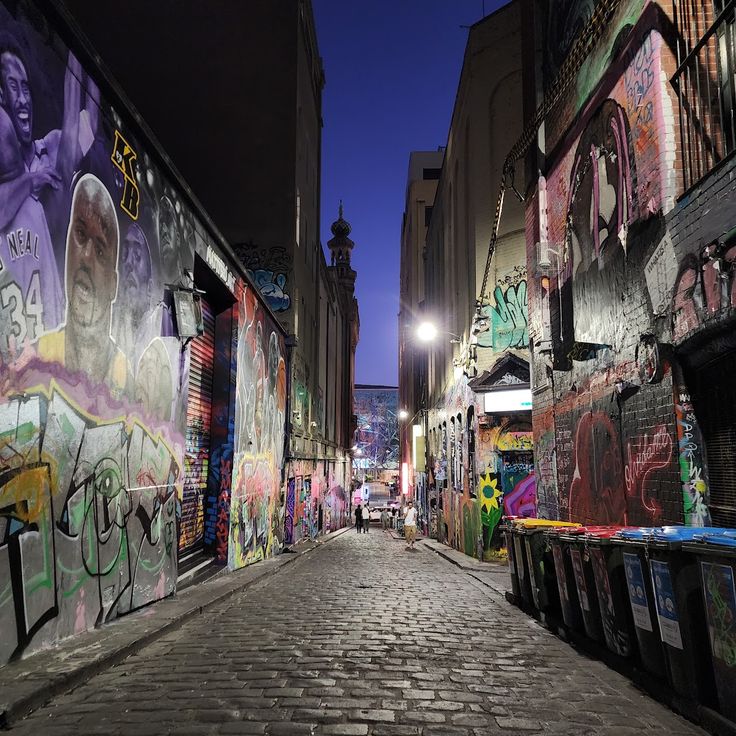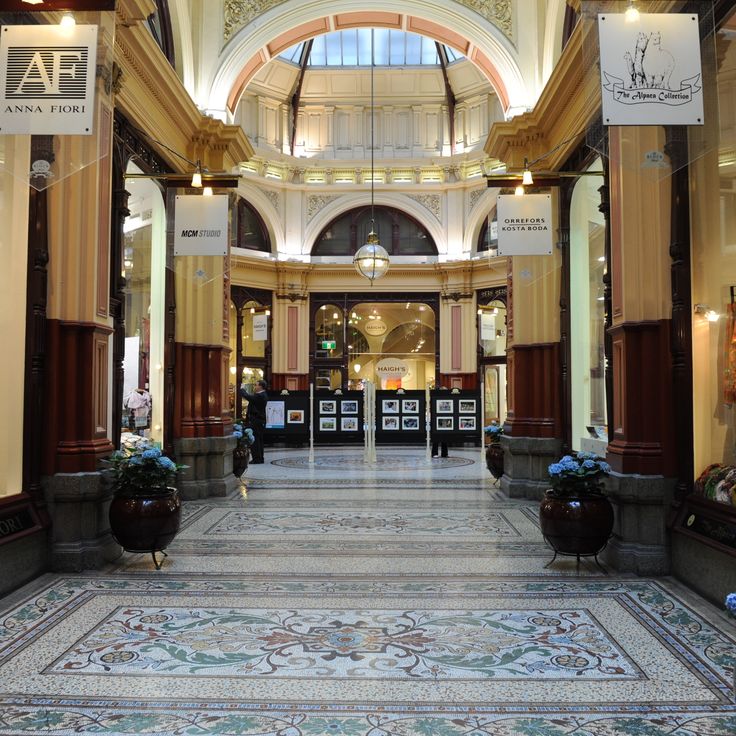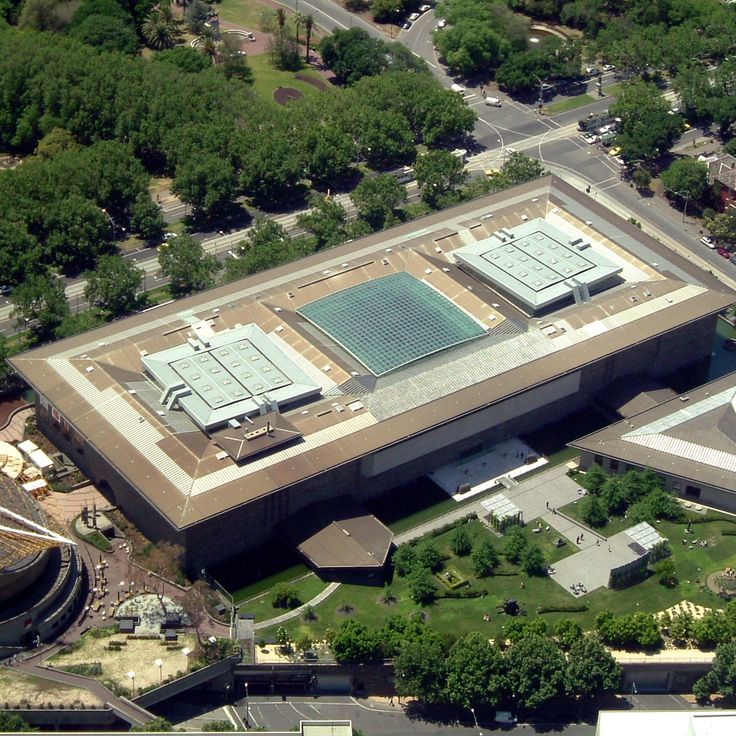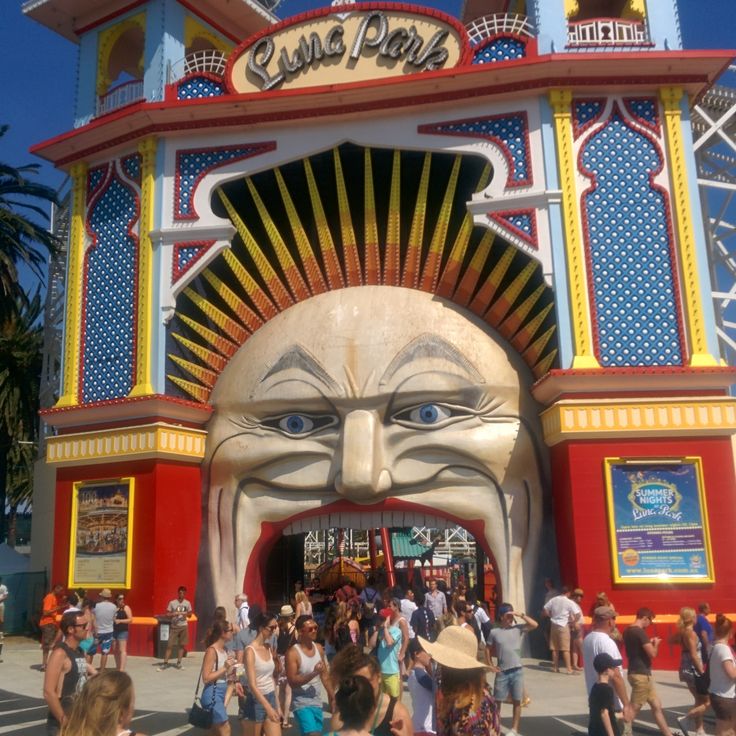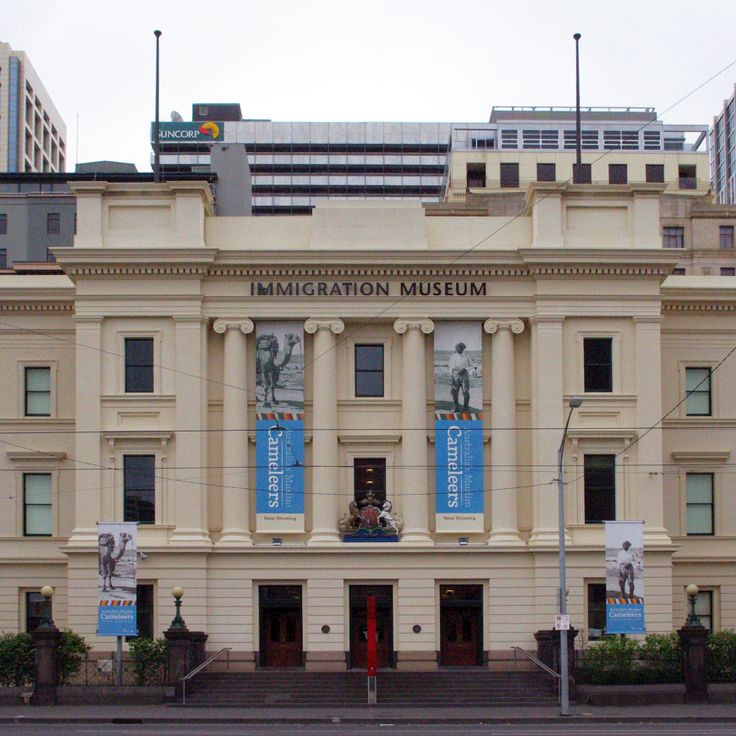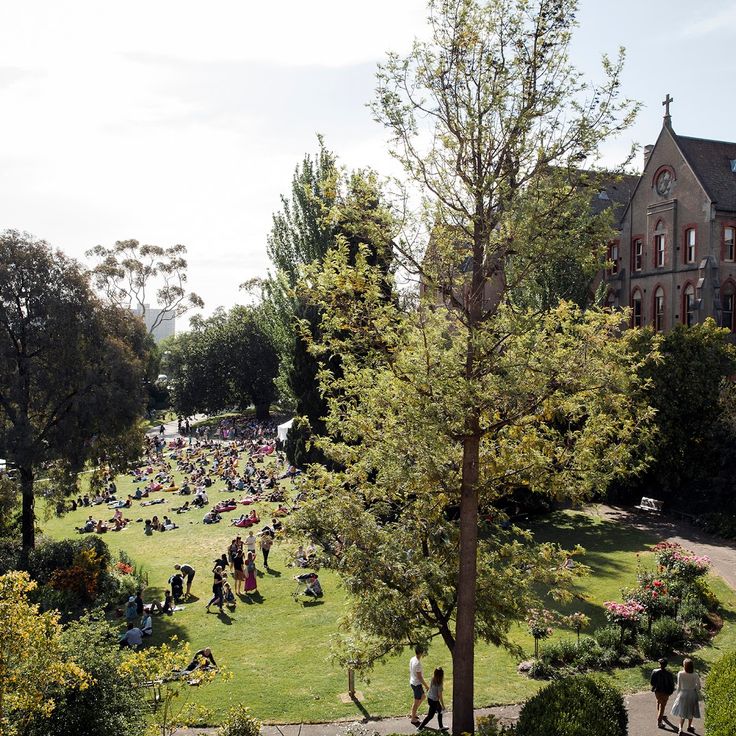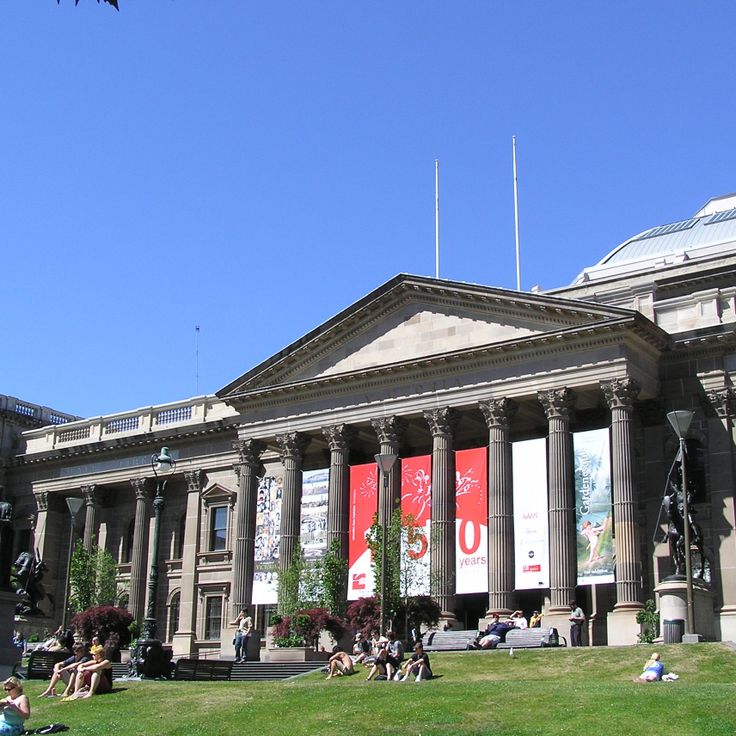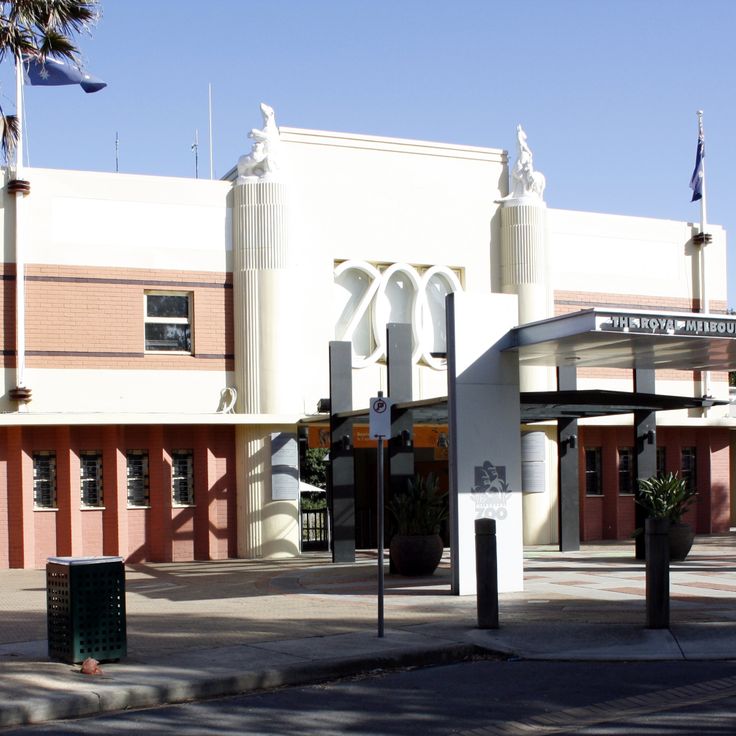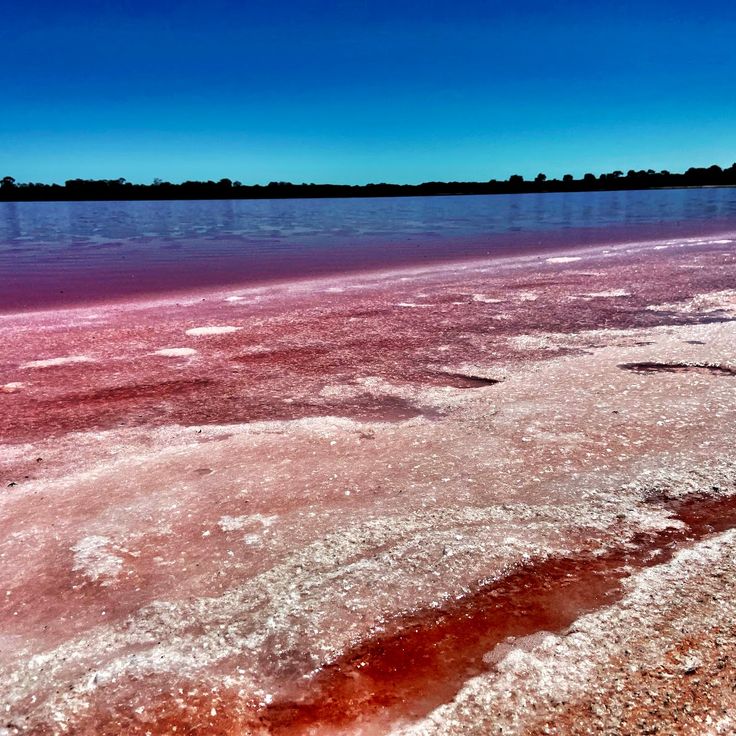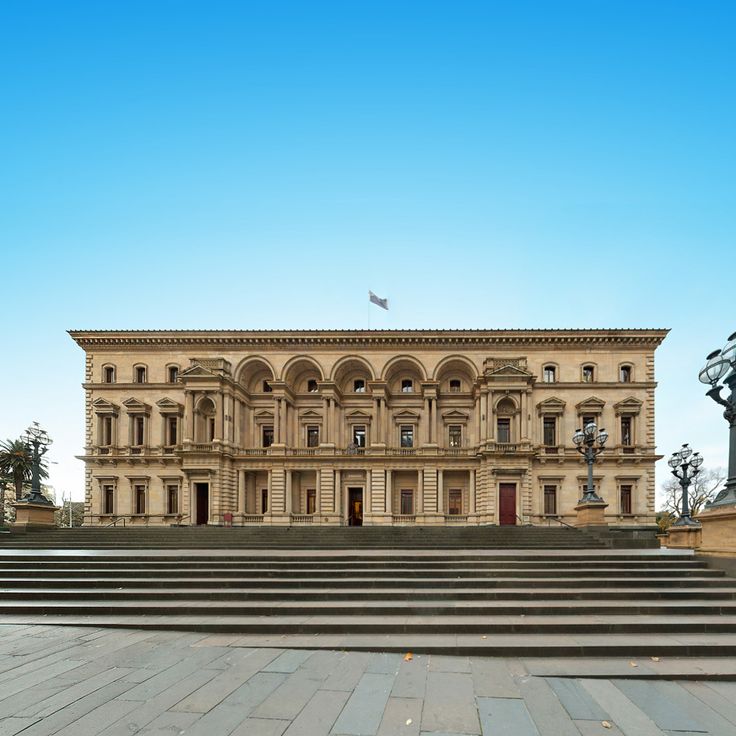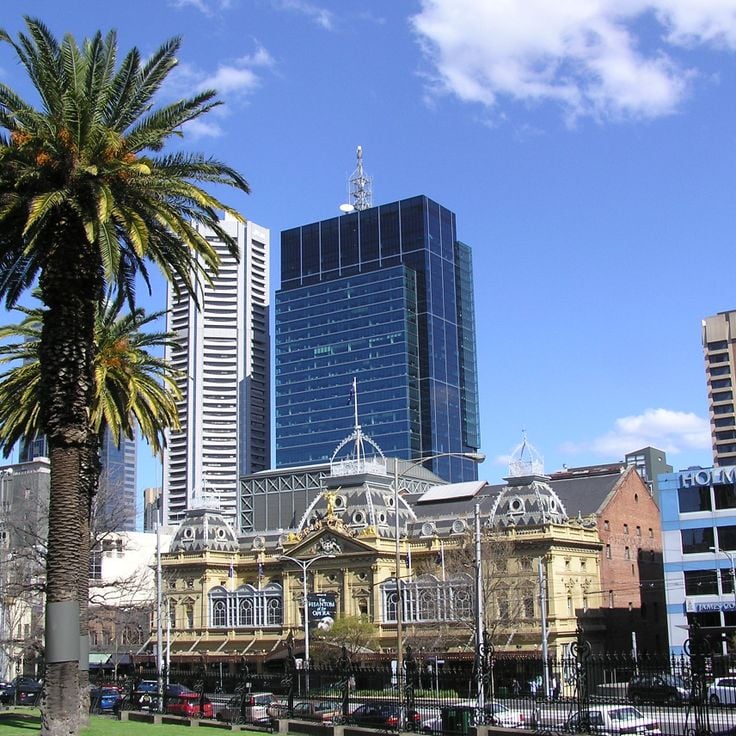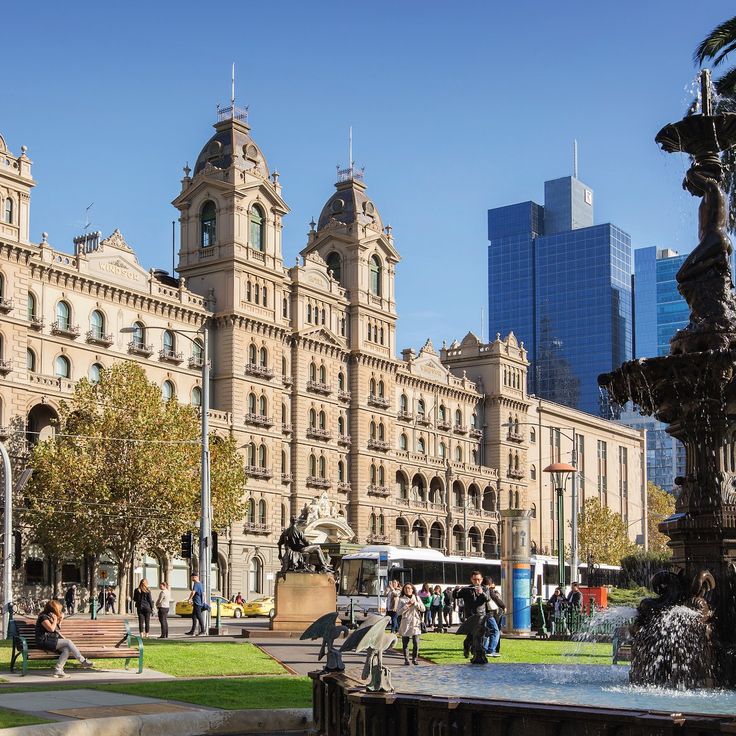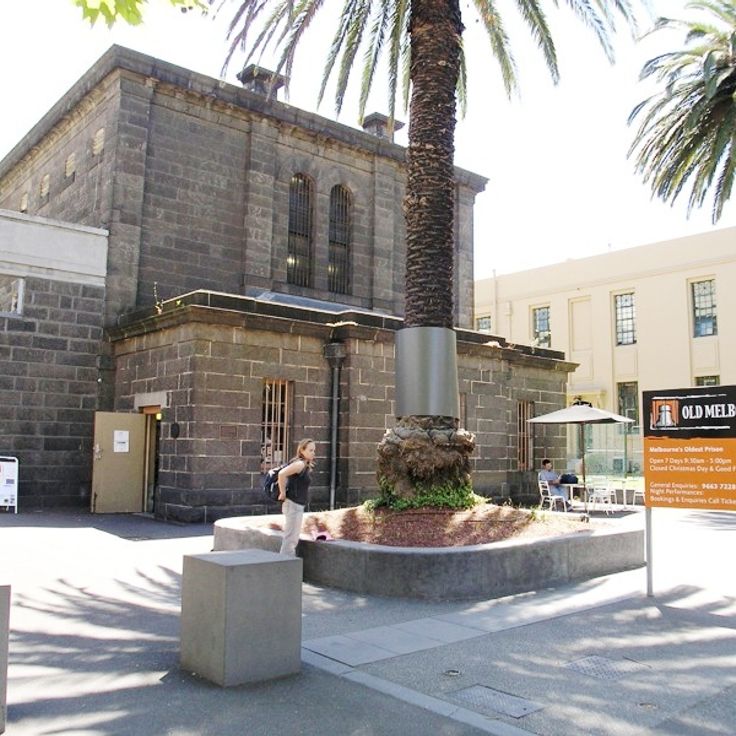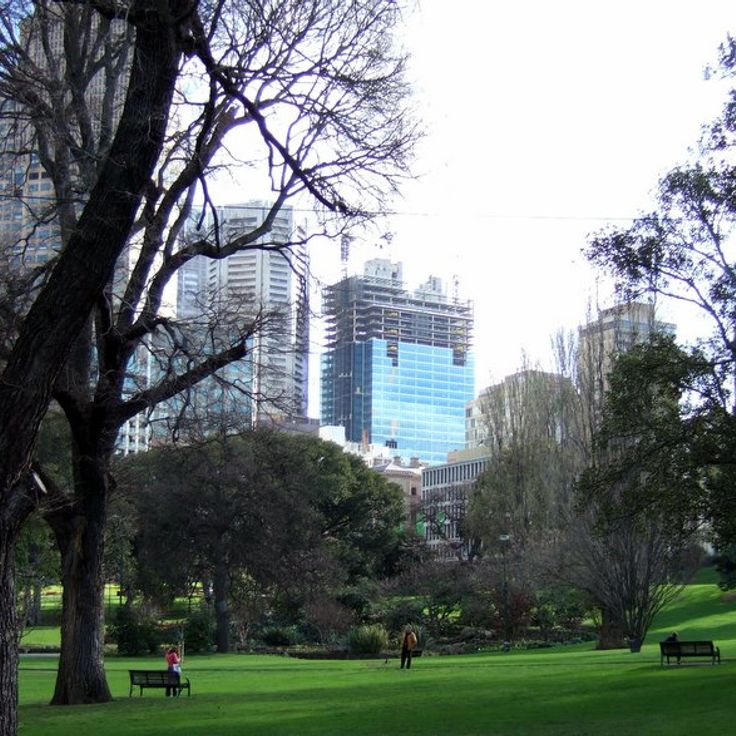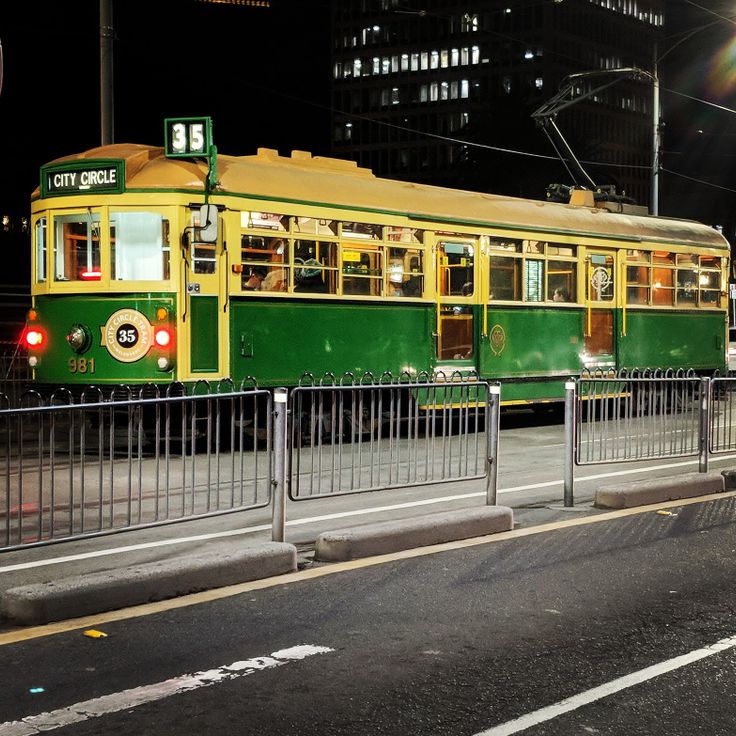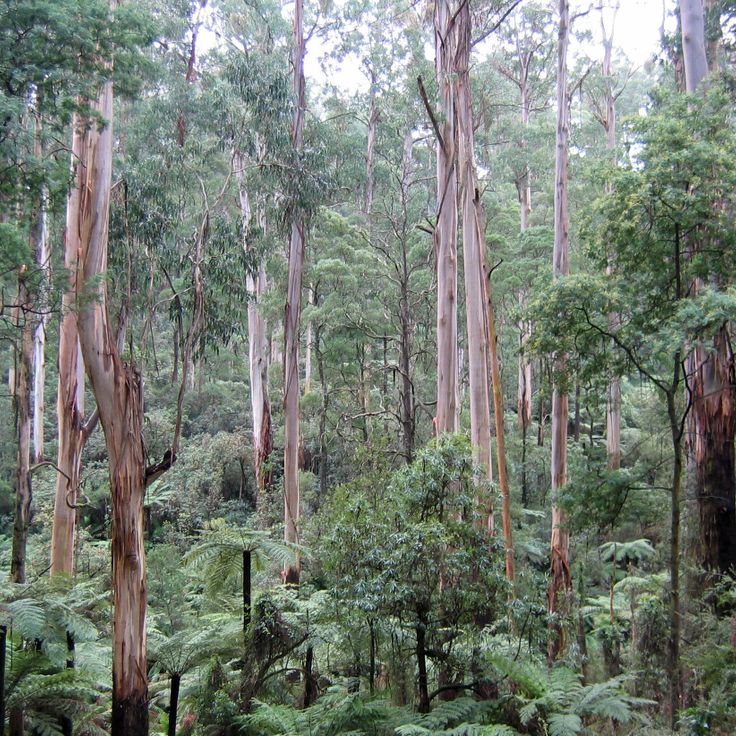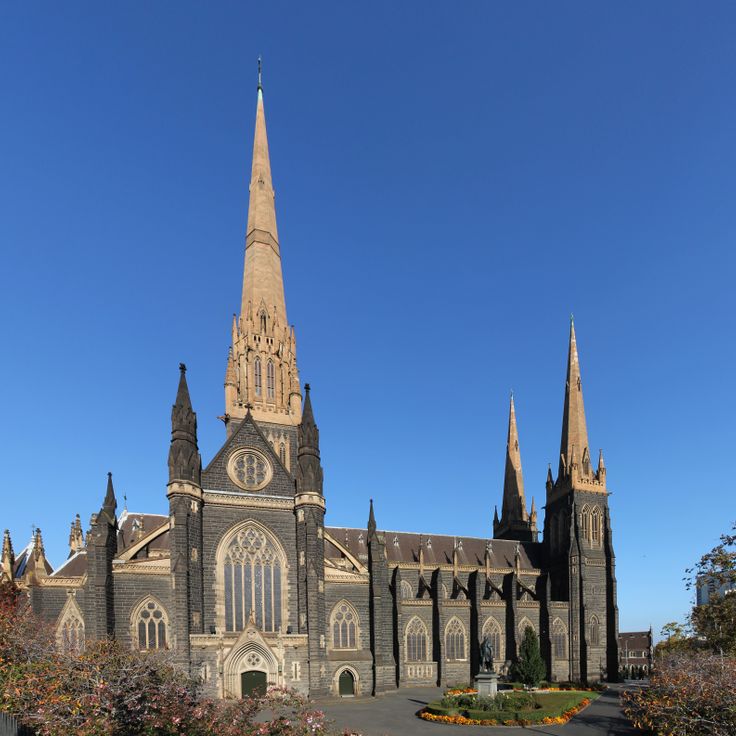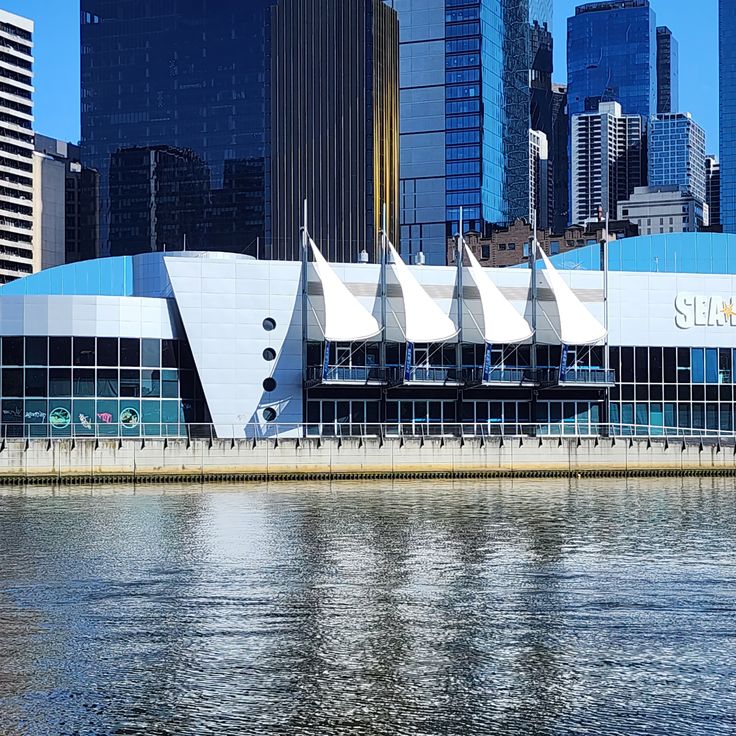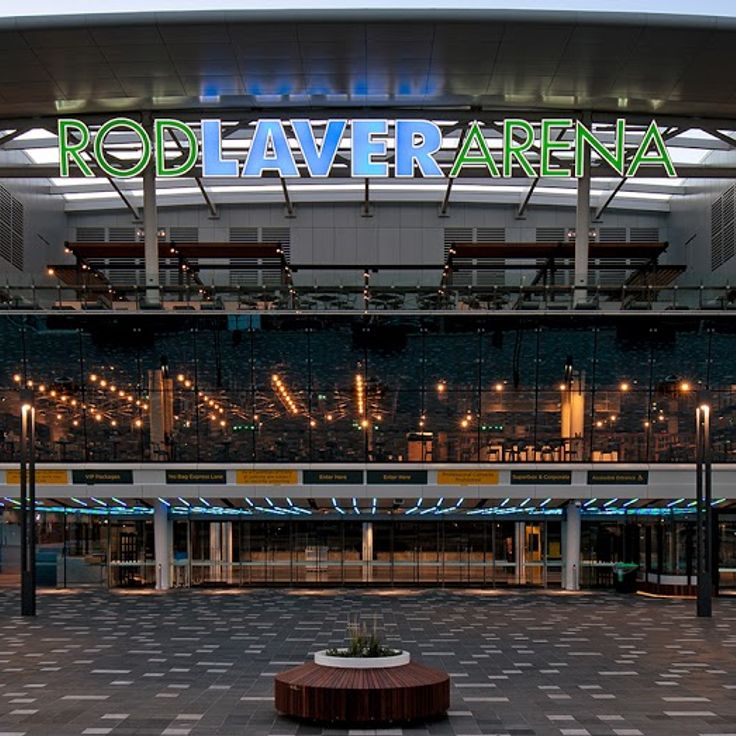Melbourne combines historic heritage and nature across several notable sites. The Queen Victoria Market, established in 1878, spans seven hectares and offers fresh products and local crafts. The Royal Botanic Gardens have housed over 8,500 plant species on 36 hectares since 1846. Flinders Street Station, built in 1910, marks the city center with its French architecture and green dome. Federation Square covers 3.2 hectares and hosts the Arts Centre, NGV Gallery, and restaurants. The surrounds of Melbourne provide various destinations. The Great Ocean Road stretches 243 kilometers between Torquay and Allansford, along limestone cliffs and rock formations of the Twelve Apostles. St Kilda is popular for its beach, pier, and Luna Park, an amusement park dating back to 1912. Phillip Island is a 100 km² natural reserve where penguins return to the coast each evening, and the island also hosts seal colonies. The Melbourne Museum displays natural history collections and Aboriginal culture, while the Eureka Tower offers views of the city from 297 meters high.
St Kilda is a beachside suburb featuring a sandy shore, numerous cafes, a historic pier, and Luna Park, an amusement park established in 1912. This coastal area combines beach activities with urban culture, offering restaurants, bars, and shops along the main street. The pier extends into Port Phillip Bay and serves as a viewing platform, while the esplanade provides a path for walking and cycling.
The Great Ocean Road stretches 243 kilometers along the coast between Torquay and Allansford. This road passes through coastal landscapes and provides access to the Twelve Apostles, a collection of limestone rock stacks in the ocean, as well as numerous other limestone cliffs and coastal formations.
The Queen Victoria Market was established in 1878 and covers seven hectares in central Melbourne. This covered market offers numerous stalls selling fresh fruit and vegetables, meat, fish and seafood, as well as local crafts. The historic market halls attract daily visitors and locals who come to purchase regional specialties and handmade goods.
Federation Square spans 3.2 hectares in central Melbourne and combines cultural institutions with dining establishments. This public plaza houses the Ian Potter Centre of the National Gallery of Victoria, the Australian Centre for the Moving Image, and numerous restaurants and cafés. A large screen regularly broadcasts sporting and cultural events for visitors.
Phillip Island is a 100 km² nature reserve where little penguins return to shore every evening. The island is home to seal colonies on offshore rocks and features an international motorcycle racing circuit.
Flinders Street Station was built in 1910 and features French-style architecture with its green dome as the central railway hub of the city. The building serves as a meeting point in downtown Melbourne and connects thousands of commuters daily with the city's metro network.
The Royal Botanic Gardens hold a collection of over 8500 plant species across 36 hectares. The grounds include several lakes, a network of paths, and an observatory that opened in 1846 for astronomical observations.
The Melbourne Museum is the largest museum in the southern hemisphere and presents collections on natural history, Aboriginal culture, and the urban development of Melbourne. The museum features several permanent exhibitions, including a natural history section with Australian flora and fauna, a gallery on the history of Victoria's indigenous peoples, and thematic areas covering the social and economic development of the city.
The Eureka Tower reaches a height of 297 meters and contains 91 floors. The 88th floor houses an observation deck that provides views across Melbourne and its surroundings. A notable feature is the outdoor terrace with a transparent glass floor that allows visitors to look directly down to street level.
The Docklands precinct occupies a former industrial port that has been redeveloped over recent decades. Today the area contains residential buildings, office complexes, restaurants, and retail outlets. The Melbourne Star Ferris wheel offers views across the city and bay. The harbour now serves as a marina for recreational boats and yachts.
The Melbourne Cricket Ground is a stadium with 100,000 seats that hosts cricket matches and Australian football games. The facility also houses the National Sports Museum, which documents the history of Australian sport.
Fitzroy is a residential neighbourhood north of the city centre, known for its arts scene and culinary diversity. The streets are lined with independent galleries, cafes and restaurants offering various cuisines. Numerous boutiques showcase local fashion designers and handcrafted goods. Preserved Victorian architecture characterises the streetscape of this district.
The Shrine of Remembrance was built in 1934 as a national monument honoring Australian soldiers who died in wars. The building displays classical architecture with Doric columns and a central sanctuary housing the Stone of Remembrance.
Captain Cook's Cottage was built in 1755 in England before being transported to Australia and rebuilt in the Fitzroy Gardens in 1934. The building displays period furniture and everyday objects from the 18th century that document life in the English countryside during the Cook family's time.
Hosier Lane is a paved alley in the city center where artists create murals and graffiti on the walls. The street art changes regularly, transforming this alley into an open-air gallery frequented by locals and visitors.
The Block Arcade is a shopping gallery built in 1892 with Victorian architecture. The building features a glass ceiling, mosaic tiles, and historic shop decorations. The stores house traditional merchants and boutiques.
The National Gallery of Victoria was established in 1861 and displays Australian and international art collections across two separate buildings in central Melbourne.
Luna Park Melbourne is a seaside amusement park that has been operating since 1912. The park welcomes visitors through its entrance designed as a smiling face and offers classic rides including roller coasters, carousels, and other attractions for families.
Saint Paul's Cathedral is an Anglican cathedral built in the neo-Gothic style between 1880 and 1931. It stands in the centre of Melbourne opposite Federation Square and serves as a landmark in the city. The building features three towers, stained glass windows and an organ with over 6000 pipes.
The Immigration Museum occupies the former customs house in Melbourne and documents Australia's migration history. The exhibitions trace different waves of immigration since European settlement and present personal stories of migrants from various periods and countries of origin. The museum examines the social, economic and cultural changes resulting from immigration.
The Abbotsford Convent is a 19th-century religious complex now functioning as a cultural center. The buildings accommodate artist studios, exhibition spaces, and facilities for creative projects. The site combines historical architecture with contemporary use, offering events, markets, and dining options within the converted convent buildings.
The State Library of Victoria was constructed in 1856 in neoclassical style and features an octagonal reading room beneath a dome. This library houses more than 2 million books along with historical collections on Australian history and extensive archives.
Melbourne Zoo was established in 1862 and ranks among Australia's oldest zoological gardens. This zoo houses 320 animal species in naturalistic enclosures spread across 22 hectares north of the city center, offering visitors encounters with animals from various continents.
Pink Lake is a natural body of water whose pink coloration results from microscopic algae of the Dunaliella salina species and high salt concentration. The intensity of the color varies depending on season, temperature, and light conditions. Located in the Melbourne region, this lake attracts visitors interested in observing this unusual natural phenomenon.
The Treasury Building was constructed in 1853 and houses a vault containing historical gold bullion. This government building served as the official treasury of Victoria during the gold rush era and now provides visitors access to this component of Australia's colonial history.
The Princess Theatre opened in 1886 in northern Melbourne and serves as one of the city's major performance venues. The theatre regularly presents musicals, plays and local productions. This historical venue features late 19th-century architecture and accommodates audiences who come to experience both national and international stage performances throughout the year.
The Windsor Hotel opened in 1883 and is located in central Melbourne. This establishment features Victorian architecture and houses traditional tea rooms. The building represents 19th-century hospitality culture and offers guests historical spaces and classic reception areas.
The Old Melbourne Gaol was constructed in 1841 as a penal institution and held several thousand prisoners until its closure. Today this museum documents the evolution of the Australian correctional system and presents nineteenth-century detention conditions in the original cell blocks.
The Treasury Gardens form a 19th-century park in central Melbourne, extending along the Treasury Building. The park contains several elm trees over a century old, along with paved pathways running through lawn areas. The green spaces provide room for walks and picnics near the government buildings.
The City Circle Tram is a free public transport service that operates historic trams in a loop around Melbourne's city center. Passengers receive audio commentary during the journey about points of interest along the route, including historic buildings, parks, and cultural institutions.
Dandenong National Park protects forests of mountain ash eucalyptus trees that grow up to 65 meters tall. The reserve features several walking tracks leading through valleys filled with tree ferns and past waterfalls. Located approximately one hour east of Melbourne's center, the park provides habitat for numerous native bird species.
The Australian Centre for the Moving Image is a museum dedicated to exploring cinema, video games, and digital art, offering visitors rotating exhibitions, thematic galleries, and professional audiovisual production studios.
St Patrick's Cathedral was built in the 19th century in Gothic style and features stained glass windows, a 105-meter nave, and an organ with 4500 pipes.
The SEA LIFE Melbourne Aquarium presents a collection of marine animals from Australian waters and the southern hemisphere. The facility houses several sharks, including grey reef sharks, as well as stingrays, king penguins, and Australian saltwater crocodiles. Visitors walk through glass underwater tunnels that provide direct views of swimming marine animals. The aquarium features themed zones representing different marine ecosystems, from tropical reefs to Antarctic regions.
Degraves Street is a narrow laneway in central Melbourne, lined with cafes, restaurants, and small shops. Tables and chairs occupy the pavement between 19th-century building facades, where visitors pause for coffee or meals. This street connects Flinders Street to Flinders Lane and attracts locals and tourists daily.
The Rod Laver Arena is a covered tennis stadium with 15,000 seats and serves as the main venue for the Australian Open. Named after Australian tennis player Rod Laver, the stadium features several bronze statues commemorating notable tennis champions. The arena includes a retractable roof and hosts concerts as well as other sporting events throughout the year.
Similar collections
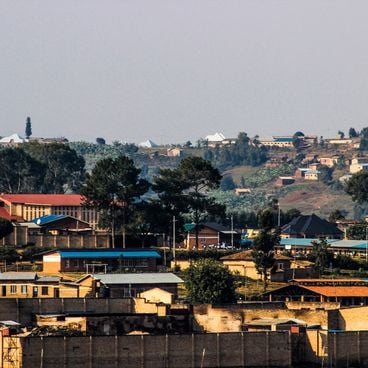
The worst prisons in the world: high-security detention centers and former penitentiaries
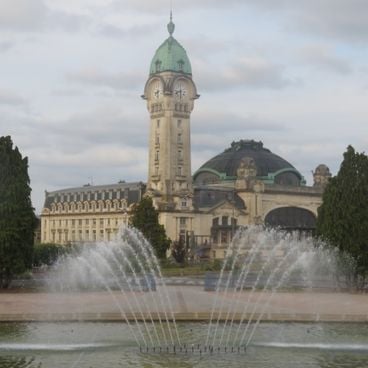
The most beautiful train stations in the World
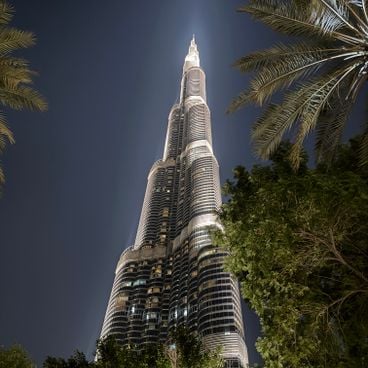
World's tallest skyscrapers: the map of the tallest towers

Largest stadiums in the world: capacity, architecture, sports
